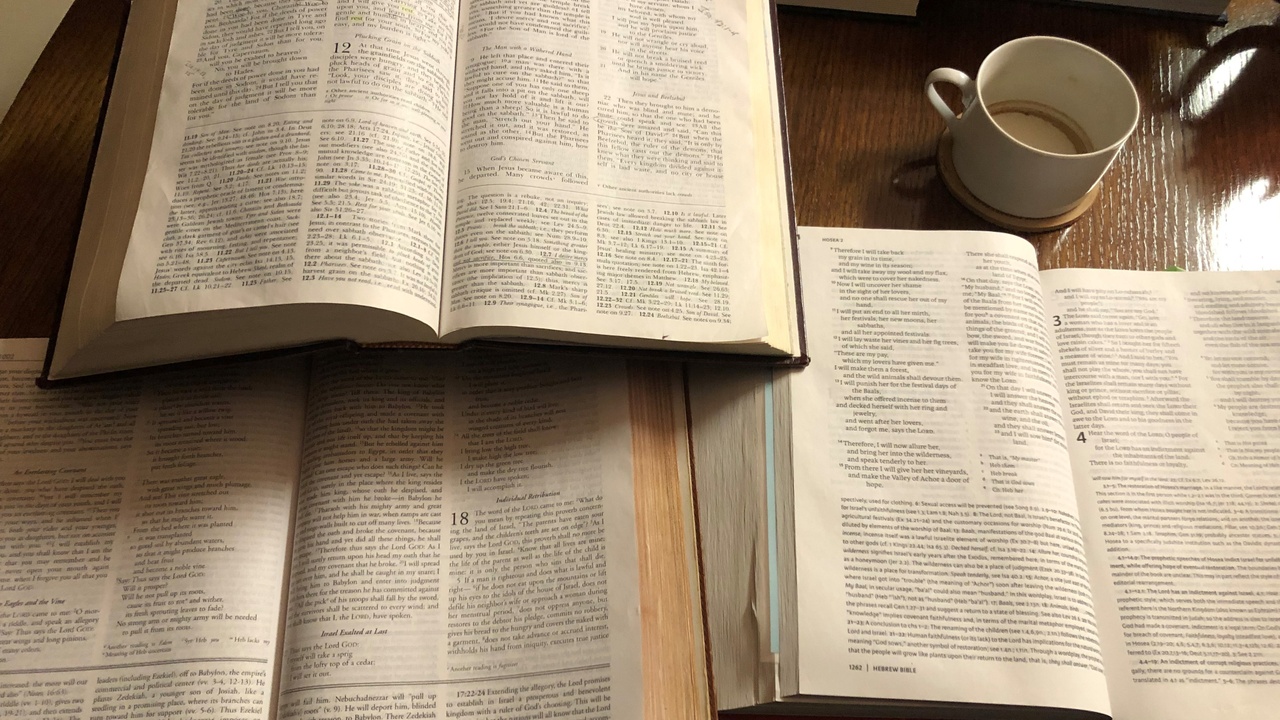Reading the Bible for Understanding

(This blog is a follow-up to the previous one about study bibles.)
There are at least two strategies we can use when we read the Bible. We can read it devotionally, as we should and as many people do. We can also read the Bible for understanding the content: the narratives, the commands, the situations, that we find there. Not nearly as many people read the Bible with the second strategy. We need to increase that number. To encourage more people to read the Bible for understanding, let's distinguish what is happening with us when we use the two different strategies.
Devotional Bible Reading
When we read the Bible devotionally, we normally read, at most, a handful of verses and often with a devotional guide or booklet of some kind. I grew up with The Upper Room, which continues to provide sustenance for millions of people around the world. Since I'm a Luddite at heart, I prefer the little paperback booklet that you can pick up at church, but it also is available digitally, as you can see from the link. Another popular one is Our Daily Bread. It follows a similar format, although with many fewer writers. The Upper Room collects devotional writings from volunteers all over the world. Our Daily Bread has a writing team.
Too often, when reading the Bible devotionally, people read only one verse. The Upper Room includes the theme verse at the top of the page. Busy people read only that theme verse rather than opening the Bible and soaking in the whole passage. We can do it this way on occasion, but if that is our habit, we have formed our minds to think of the Bible as little more than a storehouse of comforting sayings and, perhaps on occasion, though to a much lesser degree, a corrective warning. The goal of reading this way is to "get something practical," something that we feel we need in the moment to help us feel better and to survive another day.
Reading this way has its place, but notice the intent guiding the reading. We come to it primed for a particular outcome. Having read only a verse or a small passage, with the predisposition to look for something we feel we need,, we easily wrench the Bible verse out of its context and impose meaning rather than receiving the meaning from the text. If this is the main way we read the Bible, it is almost inevitable that we hear only what we're already primed to hear. The dangerous thing is that we also subtly attribute that word to God, since the message seems to come from the book full of God's words.
I am not, by any means, suggesting that people stop reading the Bible devotionally. Not at all. However, I am asking people to read the Bible for understanding. I'm not just asking. I'm begging.
Reading for Understanding
To get to what I am promoting, I need to do some brush-clearing. First, I am not suggesting that you lean on a commentary, written by an expert scholar, for understanding. This is also one of our tendencies. As I've said many times, those resources are helpful, provided that we don't substitute the commentator's thinking for our own. We certainly benefit from the expertise of Bible scholars, but God is interested in you and what you think as you read. The commentary of highly trained scholars comes into play after you have given ample attention to the text.
I'll give an example in just a moment, but before I do, let me contrast reading for understanding with reading devotionally without putting unnecessary distance between the two strategies. To read for understanding is to learn to see features of the text that, over time, help us grasp the meaning. To understand in this way is to be pulled into the world of the text. The primary motive, then, is not to "get something practical" that we can apply right away, but rather, to let the text guide our thinking. Secondly, and very importantly, we have to practice asking questions (active reading) as we read. Unfortunately, lay people have been trained by long experience not to trust their own intellectual apparatus. If you are a lay person and this point sounds familiar, then hear me loud and clear: you are plenty smart enough to understand the Bible! But you have to practice asking questions. Sometimes they seem obvious. Sometimes they feel like they're filled with doubt. Don't worry. God loves honest questions! Practicing asking questions about what you think you see in the text makes you an active, attentive reader, which is where the real transformation starts to happen.
Reading for understanding, then, turns out to produce very practical consequences. I'm begging again. Please notice how practical - how life-changing, reading for understanding often is.
OK, now for the example from scripture. It is the strange story of Jesus walking on water. We'll take Mark's account in 6:45-52 (it's also in Matthew and John). I want to point out three details that anyone, by practicing a close reading, could notice.
After feeding the five thousand, Jesus sends his disciples away while he goes up to the mountain to pray:
When evening came, the [disciples'] boat was out on the sea, and [Jesus] was alone on the land. When he saw that they were straining at the oars against an adverse wind, he came towards them early in the morning, walking on the sea. He intended to pass them by. But when they saw him walking on the sea, they thought it was a ghost and cried out; for they all saw him and were terrified...for they did not understand about the loaves, but their hearts were hardened.

